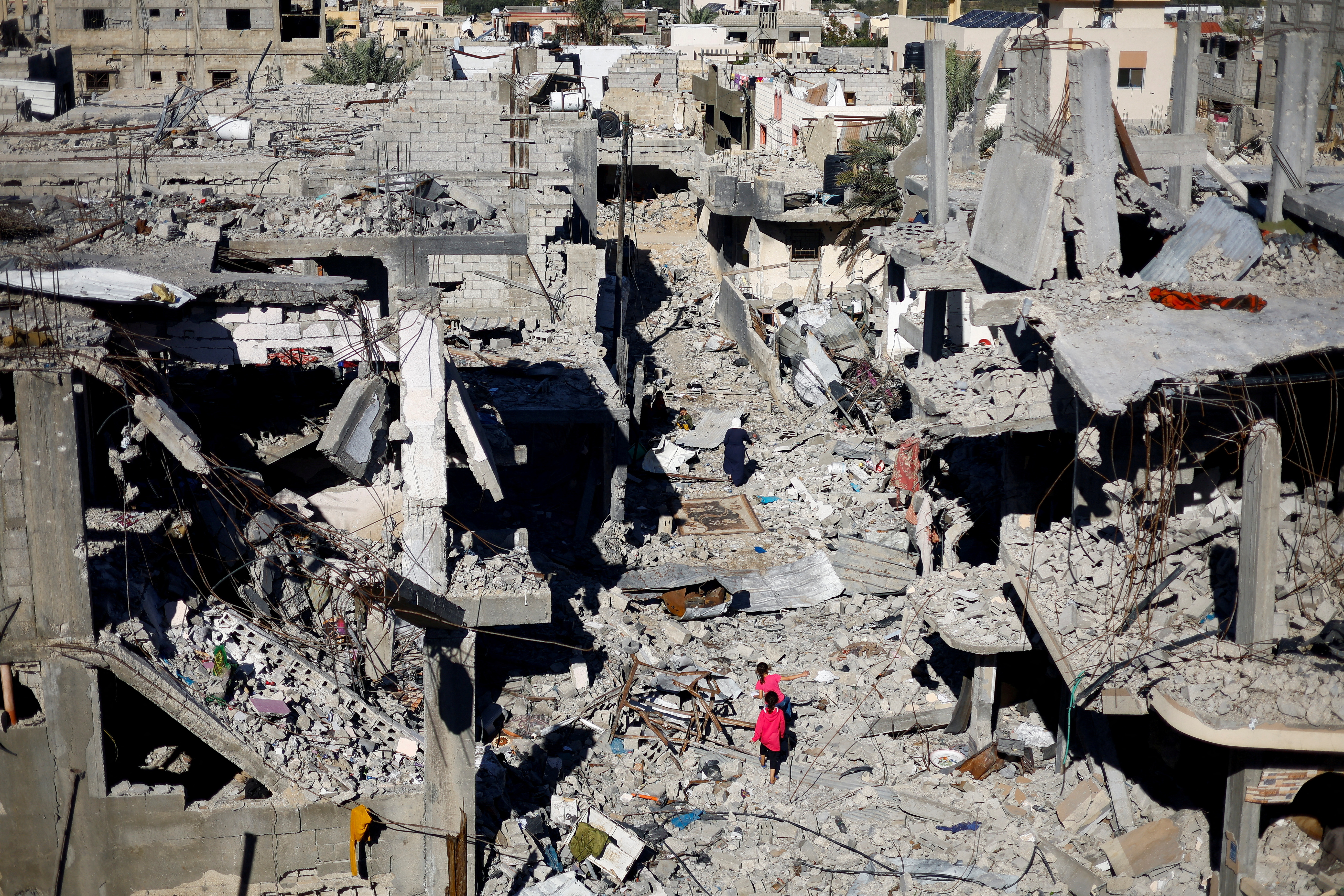Israel sharply ramped up strikes on the Gaza Strip, pounding the length of the Palestinian enclave and killing hundreds in a new, expanded phase of the war that Washington said veered from Israeli promises to do more to protect civilians.
The Israeli military said on Friday it had struck more than 450 targets in Gaza from land, sea and air over the past 24 hours – the most since a truce collapsed last week and about double the daily figures typically reported since then.
With the vast majority of Gazans now displaced and unable to access any aid, hospitals overrun and food running out, the main U.N. agency there said society was “on the verge of a full-blown collapse”.
Residents and the Israeli military both reported intensified fighting in both northern areas, where Israel had previously said its troops had largely completed their tasks last month, and in the south where they launched a new assault this week.
Gaza‘s health ministry reported 350 people killed on Thursday, bringing the death toll from Israel’s two-month campaign in Gaza to more than 17,170, with thousands more missing and presumed buried under rubble. More strikes were reported on Friday morning in Khan Younis in the south, the Nusseirat camp in the centre and Gaza City in the north.
“As we stand here almost a week into this campaign into the south… it remains imperative that Israel put a premium on civilian protection,” U.S. Secretary of State Antony Blinken told a press conference in Washington on Thursday.
“And there does remain a gap between… the intent to protect civilians and the actual results that we’re seeing on the ground.”
‘FEAR, HUNGER AND COLD’
Israel launched its campaign to annihilate the Hamas group that rules Gaza after Hamas fighters went on a rampage through Israeli towns on Oct. 7, killing 1,200 people and seizing more than 240 hostages, according to Israeli tallies.
Since then, the vast majority of Gaza‘s 2.3 million people have been driven from their homes, many forced to flee three or four times, with only the belongings they can carry.
With the fighting now extended across both halves of the Gaza Strip at the same time, residents say it has become almost impossible to find refuge. Israel says it is providing more detail than ever about which areas are safe and how to reach them, and blames Hamas for harm that befalls civilians by operating among them, which Hamas denies.
Hamas reported the most intense clashes with Israeli forces were taking place in the north in Gaza City’s Shejaia district, as well as in the south in Khan Younis, where Israelis reached the heart of the enclave’s second-biggest city on Wednesday.
The Israeli military’s Arabic-language spokesman posted to social media that troops were operating “forcefully against Hamas and terrorist organizations in the Gaza Strip, especially in the Khan Younis area and the northern Strip”.
He said all residents must leave the Jabaliya and Zeitoun areas in the north, as well as Shejaia and the old city in Gaza City. In the south, residents seeking shelter should head along the coast, with the main north-south route through the spine of the enclave now “a battlefield”, he said.
Reuters journalists in the southern Gaza Strip have seen dead and wounded overrunning the main Nasser hospital in Khan Younis, where there was no room on the floor on Friday for arriving patients sprawled across bloodsmeared tiles.
“We are staying in an area that is, according to maps, a safe area,” said Mohamed al-Amouri, adjusting an oxygen mask for his school-aged son who lay on a hospital bed in soccer shorts with his legs bandaged and his body lacerated.
“Children were on the streets playing, living life normally… we went out after the hit, hearing screams, to find youth, children, women and men in body parts – among them martyrs and injured.”
In Rafah, further south hard against the border with Egypt, Thaer Kadeeh is living with his family in a makeshift tent from sheets of thin plastic.
“We don’t sleep. Fear, hunger and cold, the three combined and no one is looking out for us,” he told Reuters. “You try to make the feeling of hunger go away for like an hour, but then the child asks again for food.”
Reuters was unable to enter other parts of the enclave but reached residents by telephone who described similar scenes of desperation. With the fighting now in all directions, there was no place left to flee, said Yamen, sheltering at a school in central Gaza with his family.
“Inside the school is like outside it: the same feeling of fear of near death, the same suffering of starvation,” he said. “Every day we say we somehow survived. But for how long?”
Thomas White, Gaza head of UNRWA, the U.N. aid agency for Palestinians, wrote on X: “Civil order is breaking down in Gaza – the streets feel wild, particularly after dark – some aid convoys are being looted and UN vehicles stoned. Society is on the brink of full-blown collapse.”
Ramy Abdu, head of the Geneva-based Euro-Mediterranean Human Rights Monitor, posted pictures showing severe damage to the vast medieval Great Omari Mosque, the most important landmark in Gaza‘s Old City, apparently hit for the first time. There was no immediate comment from the Israeli military.







Click here to change your cookie preferences